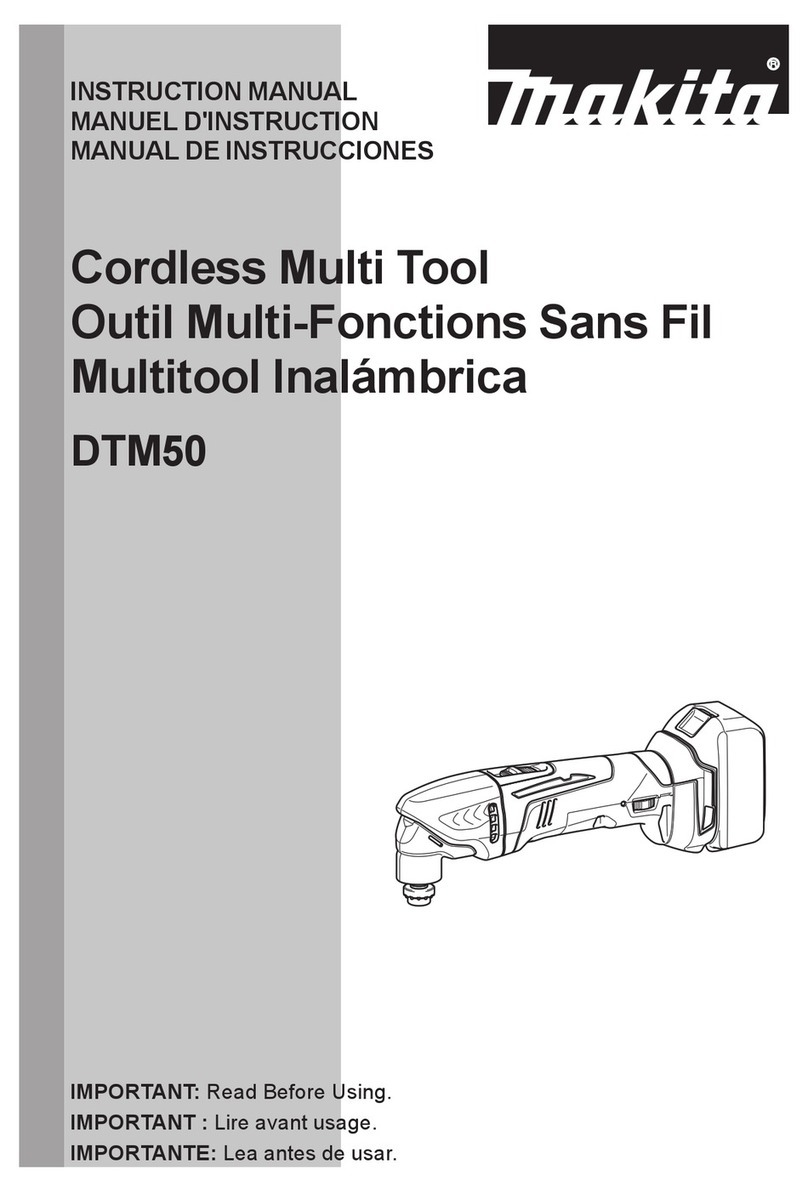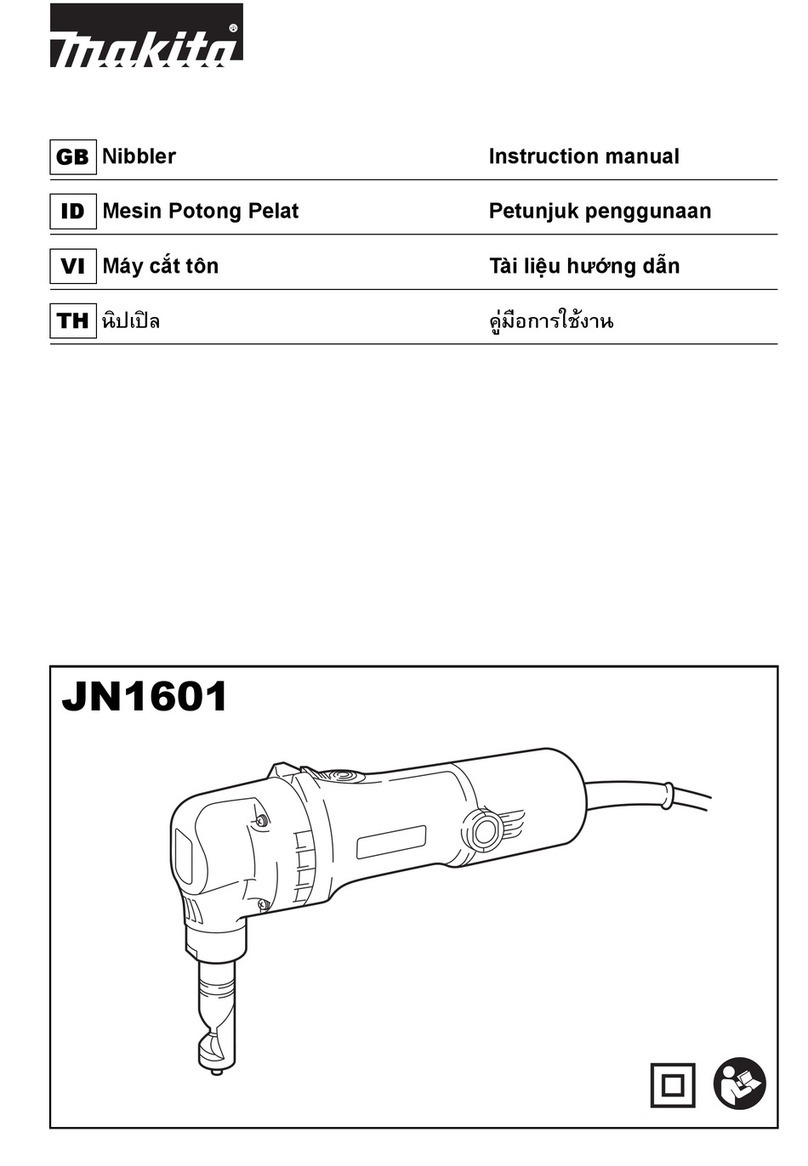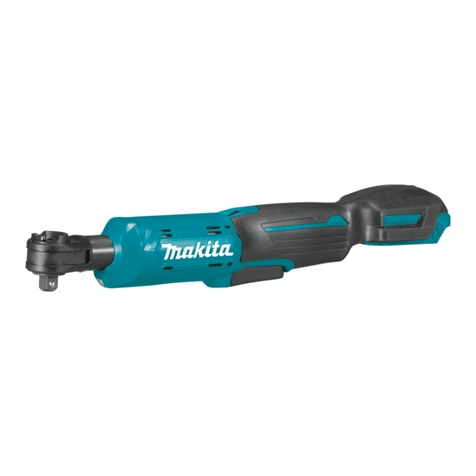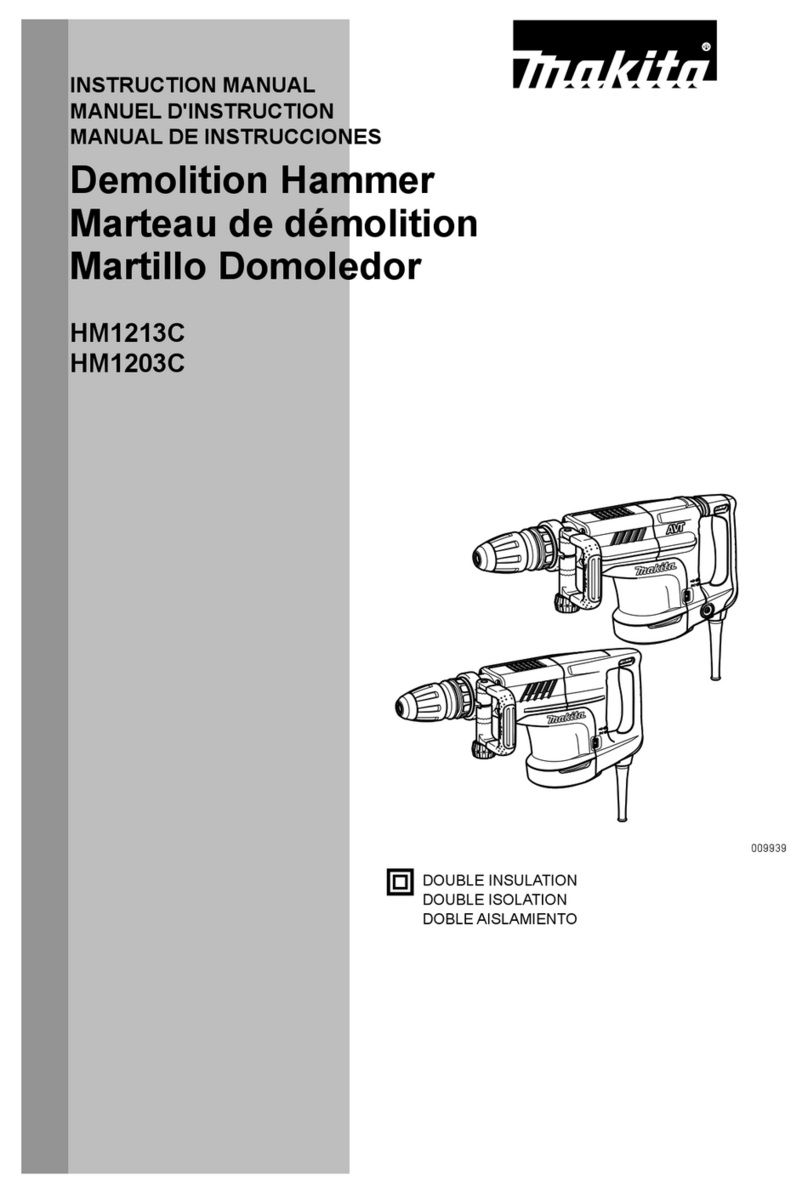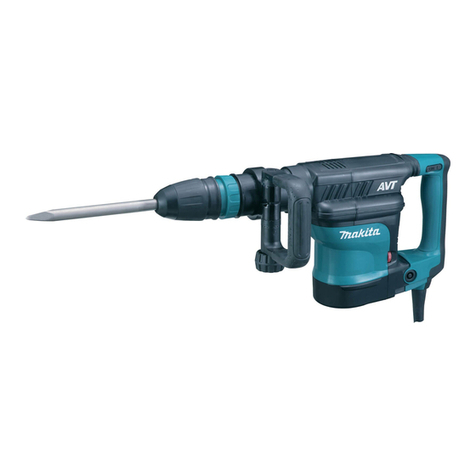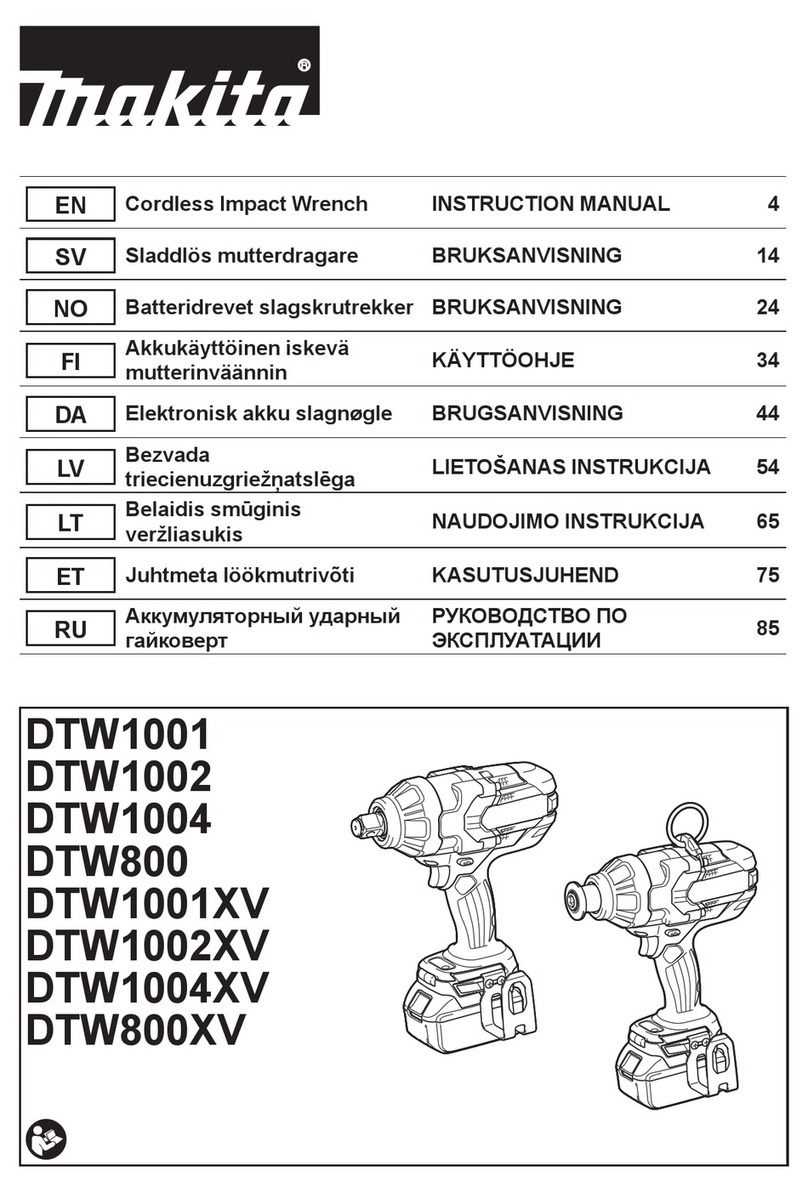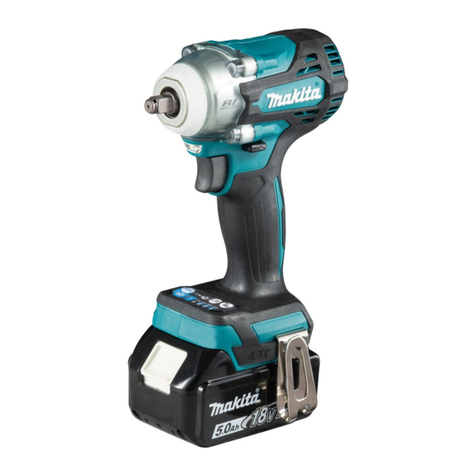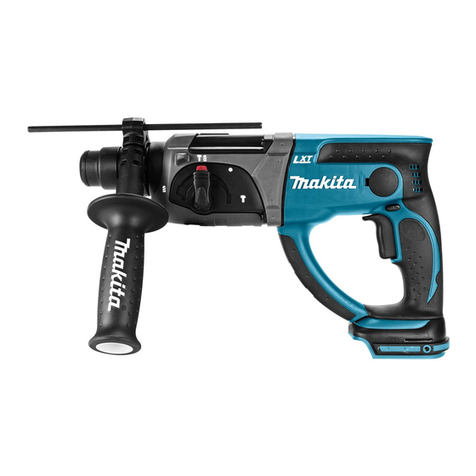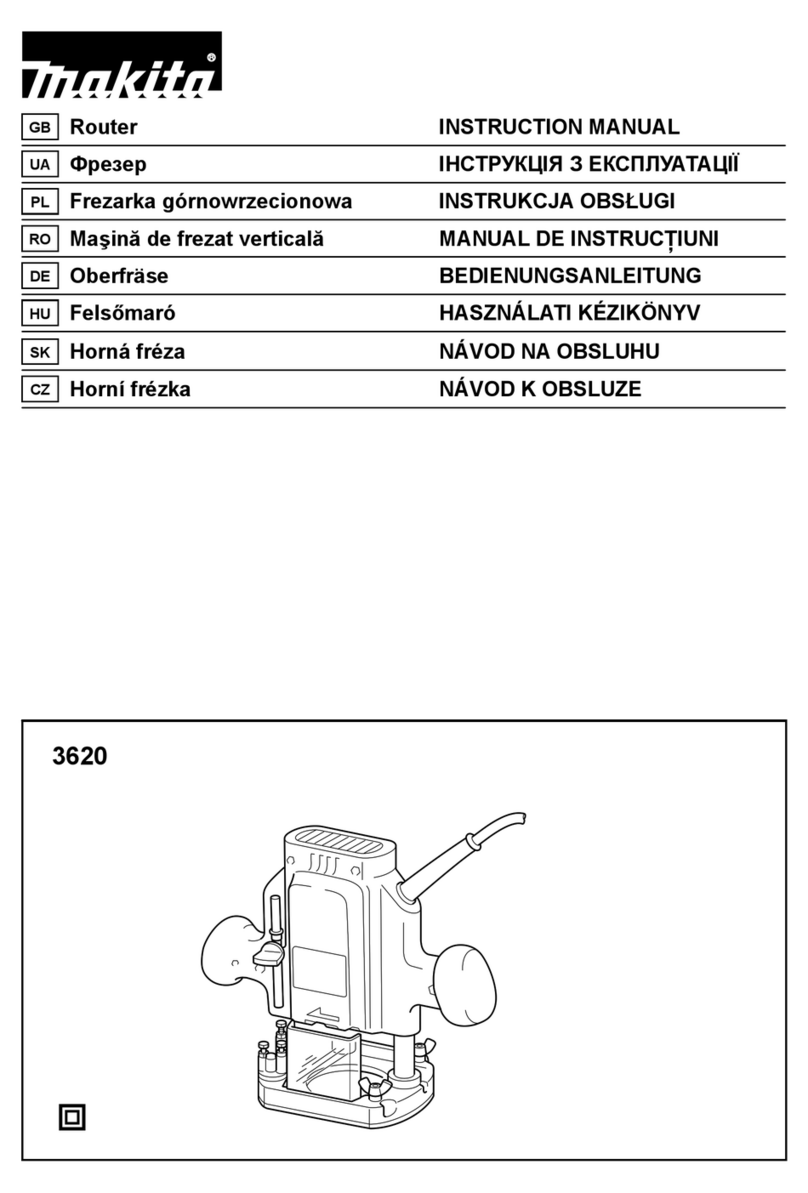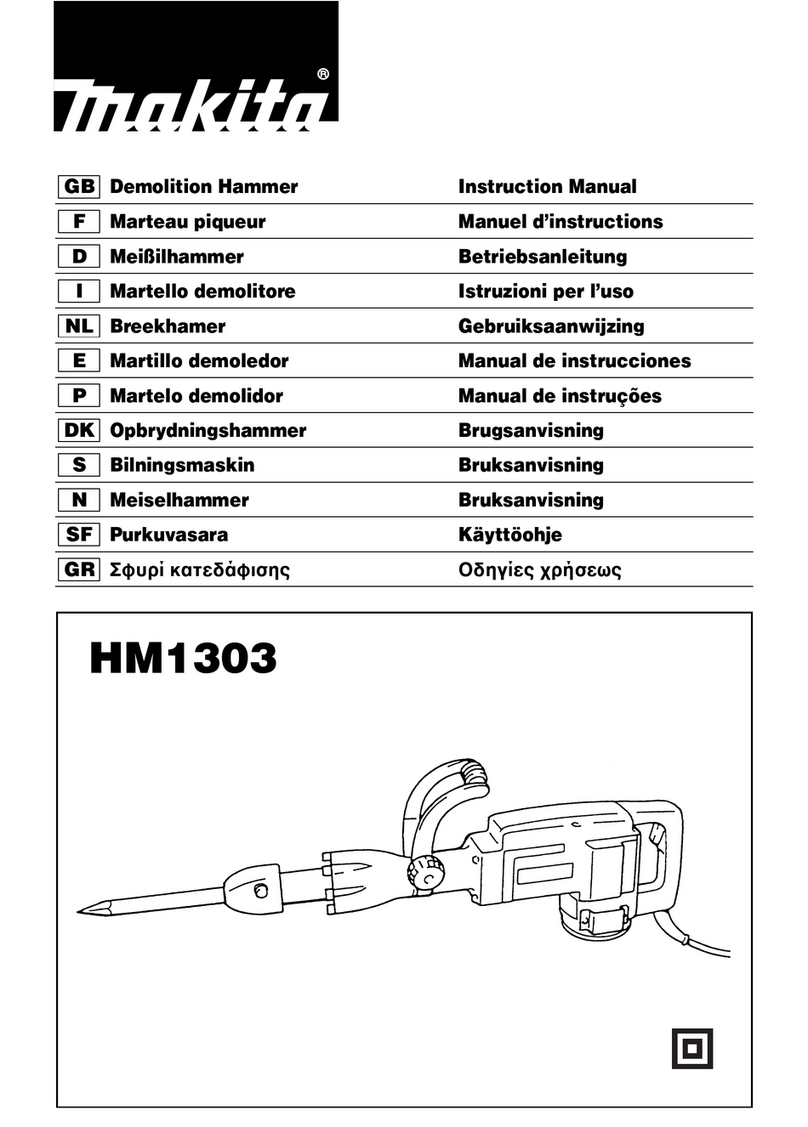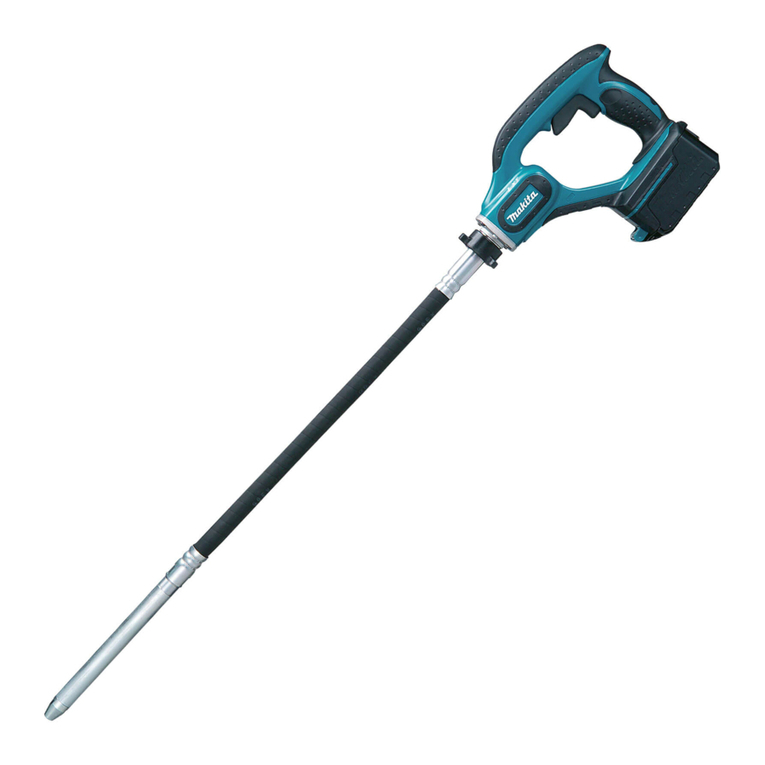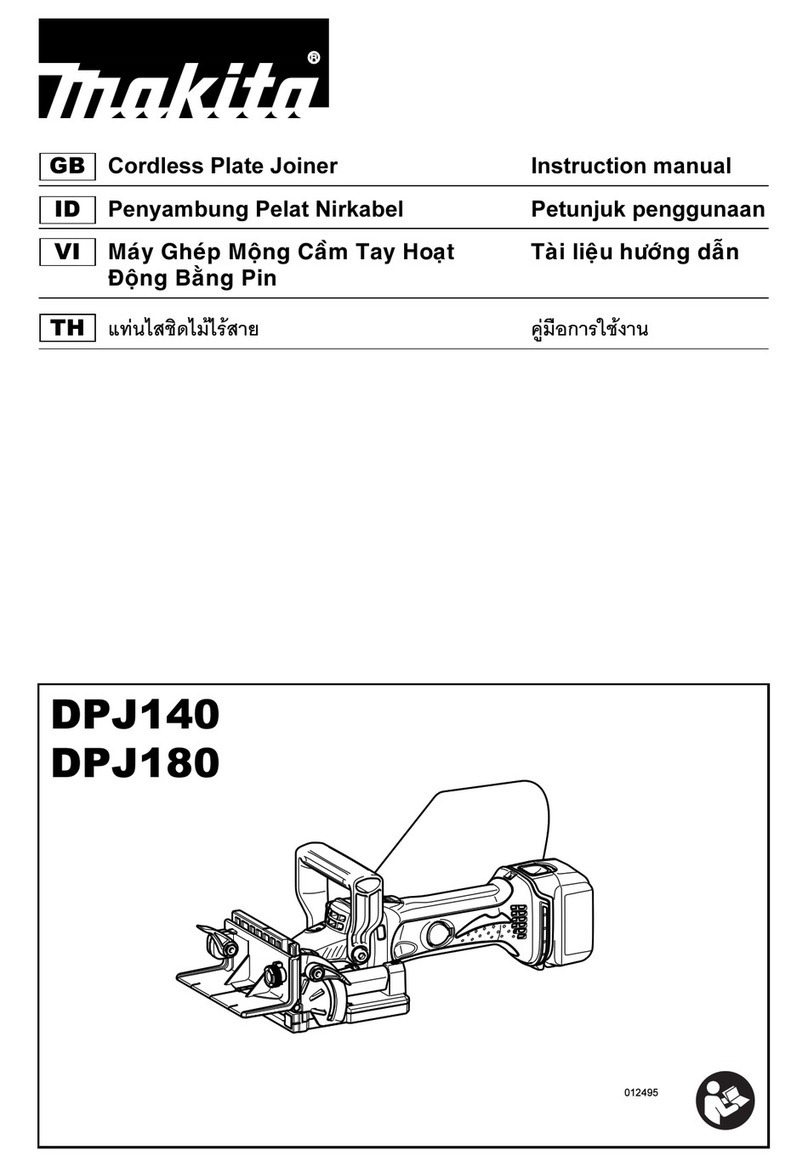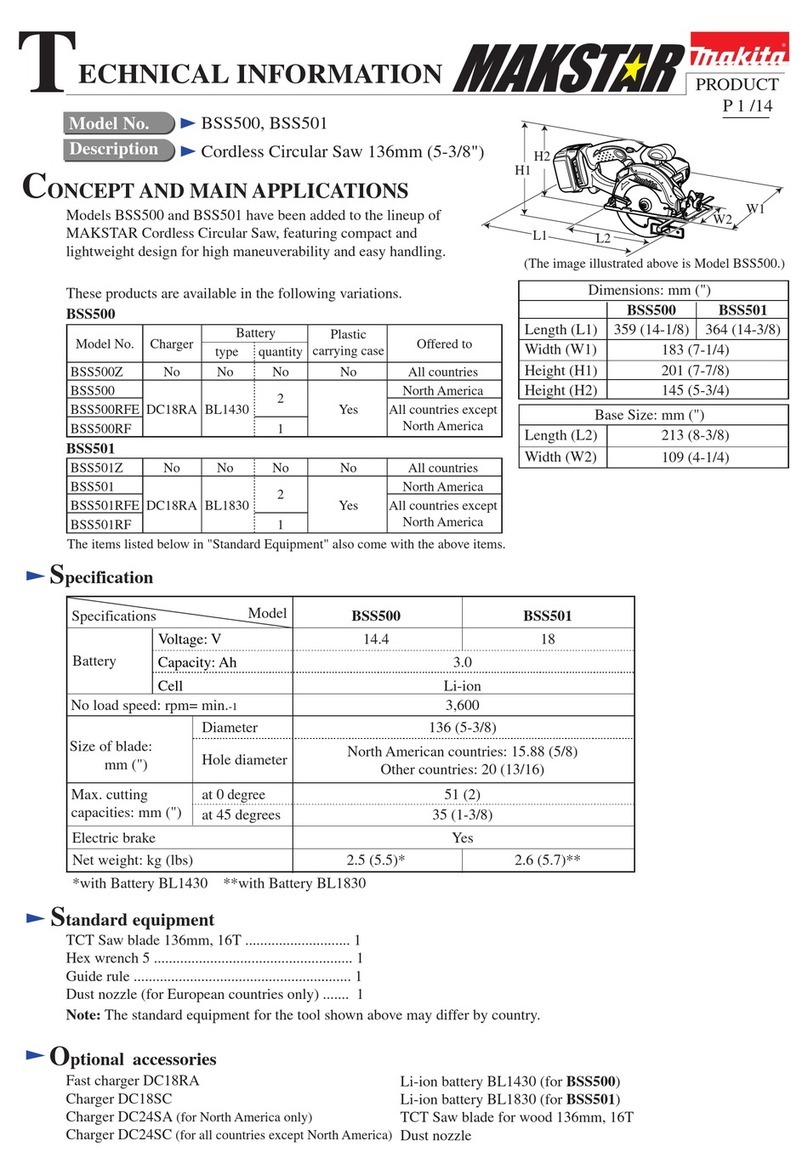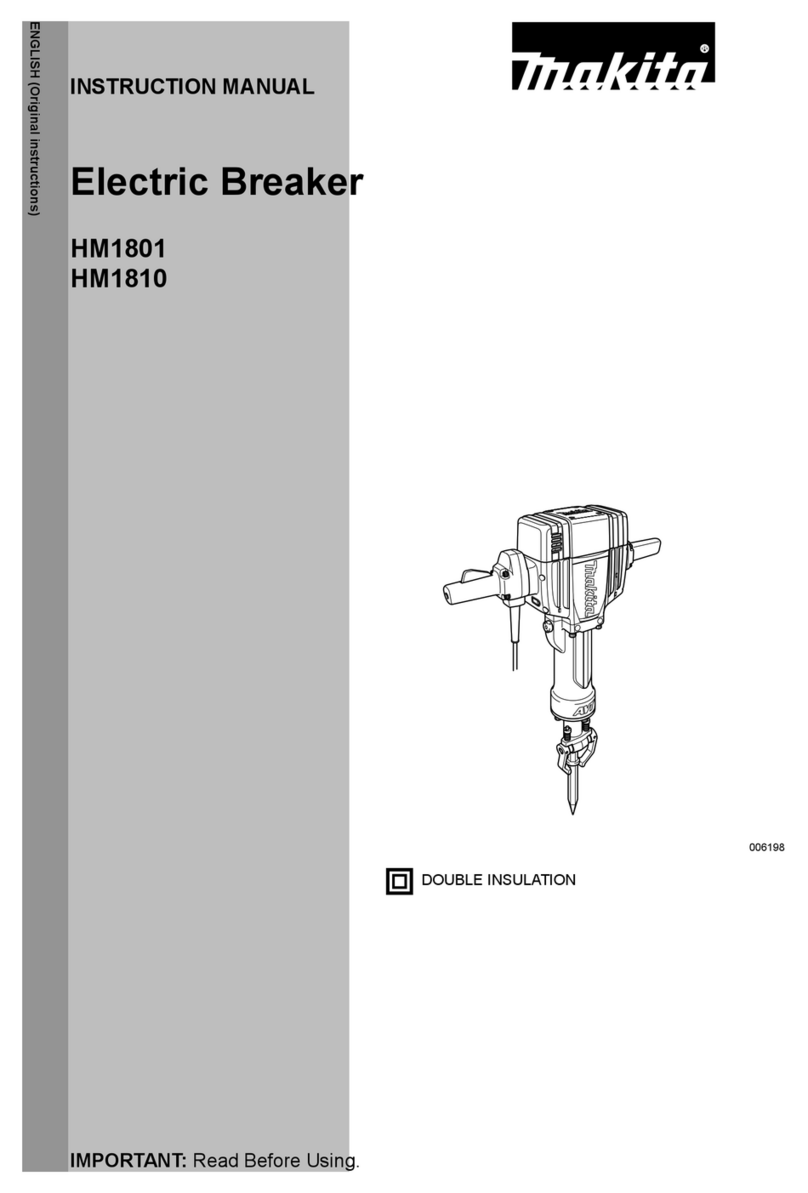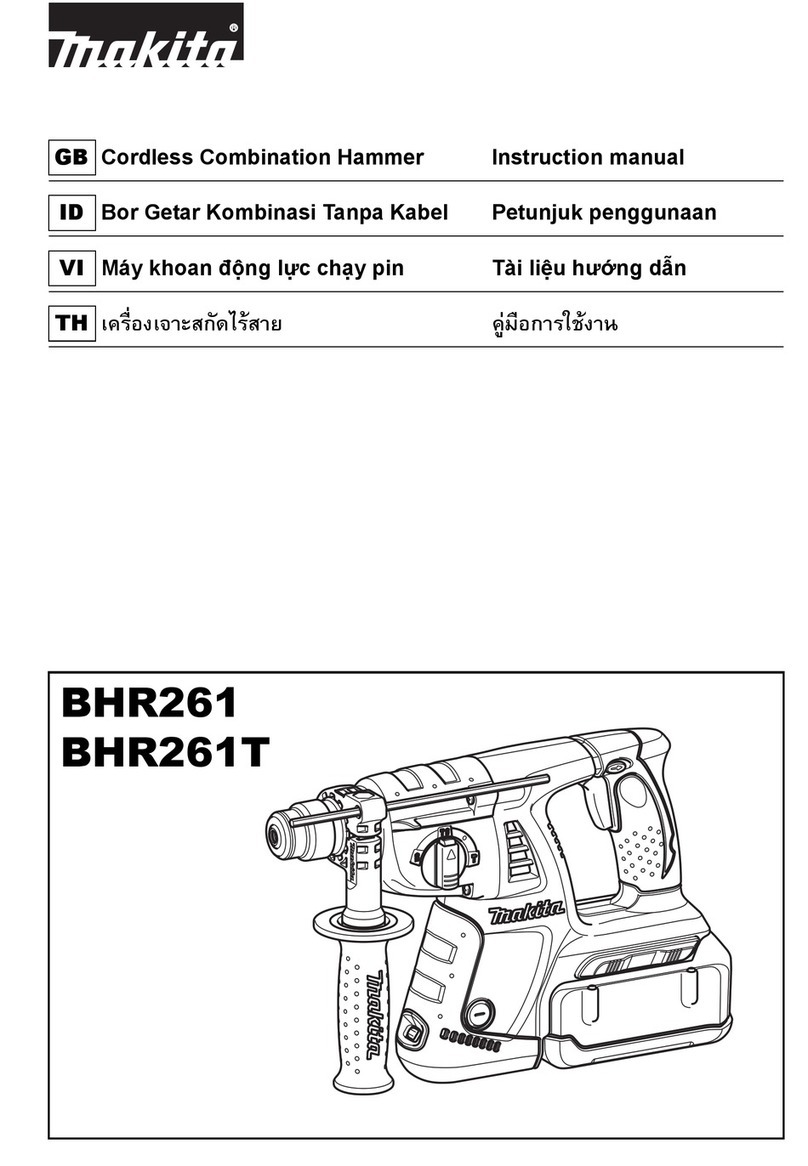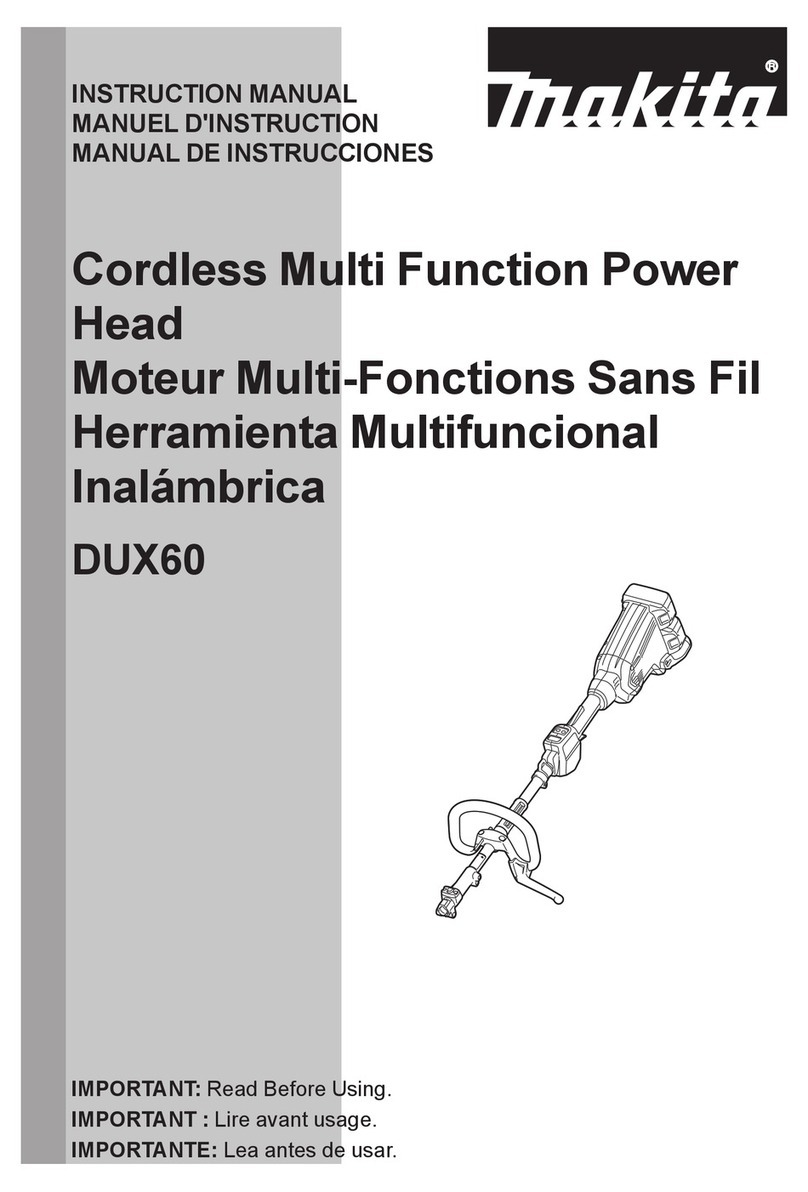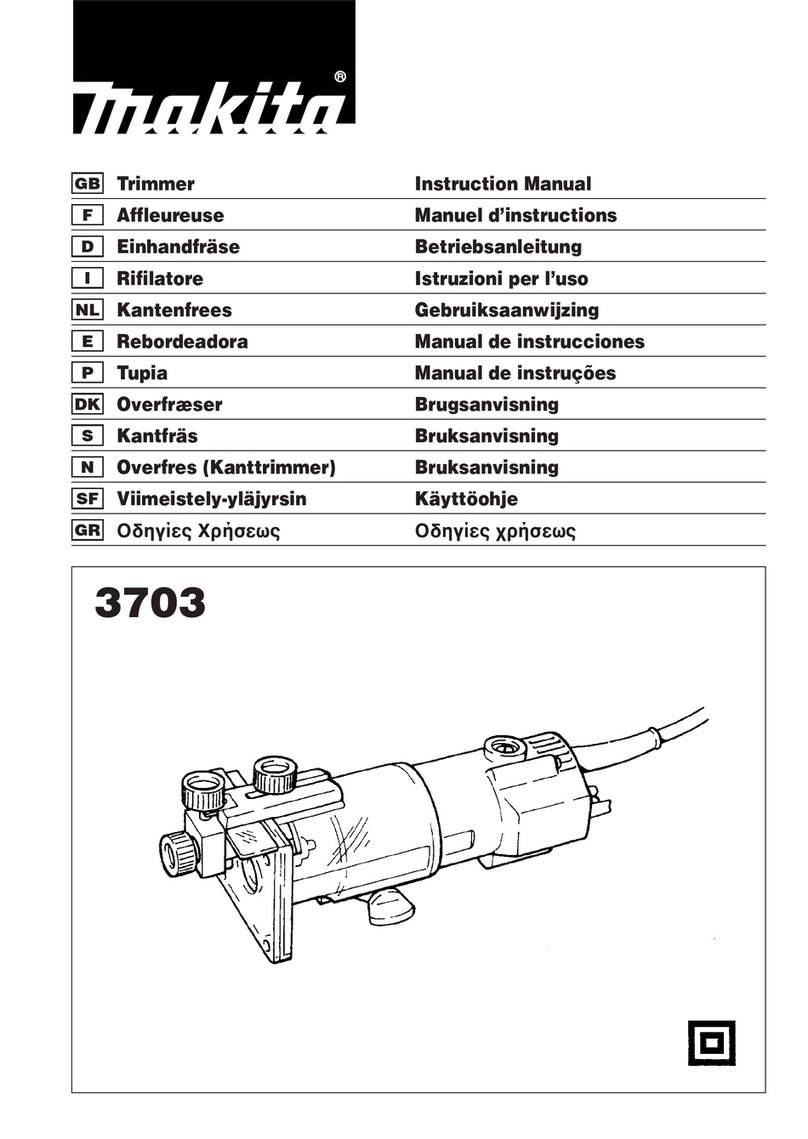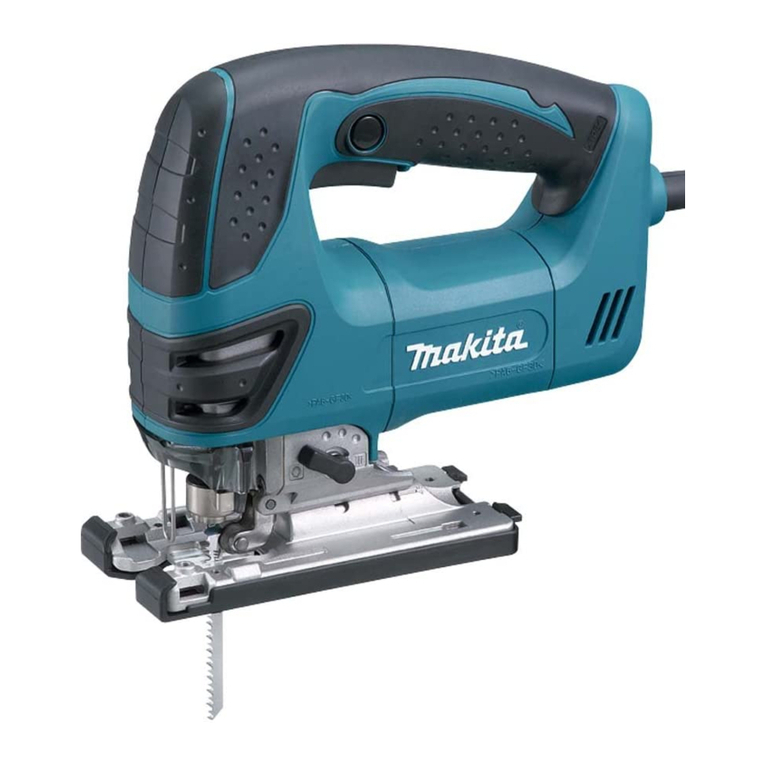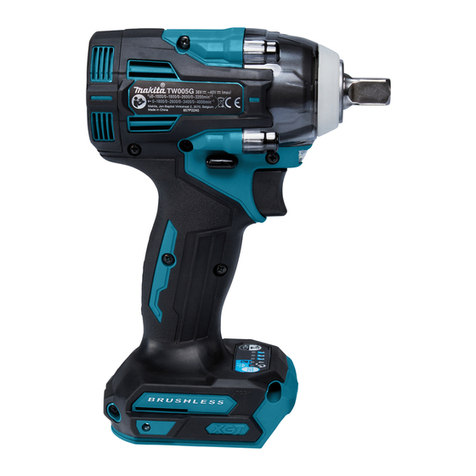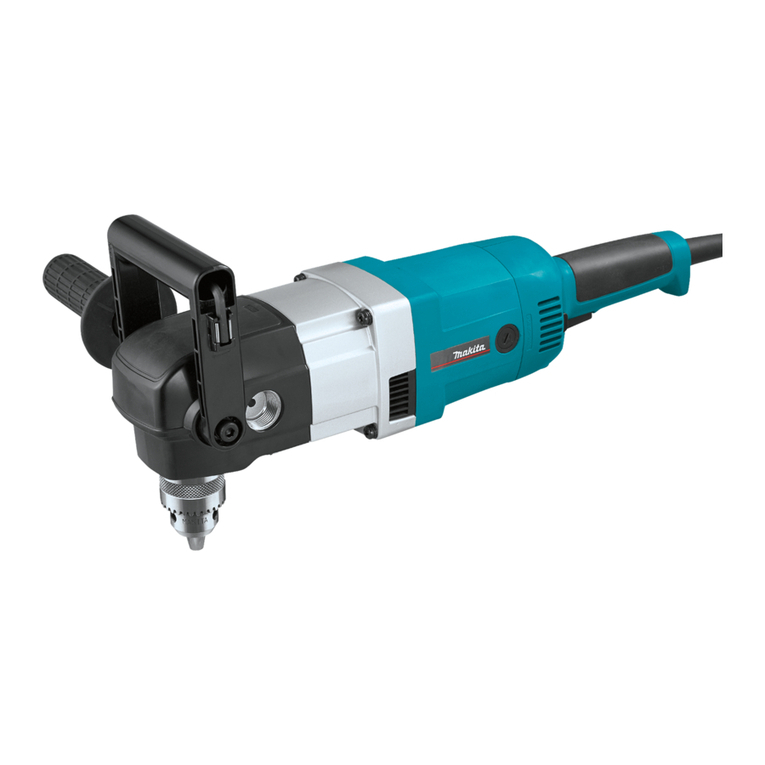18
BEDIENINGSVOORSCHRIFTEN
Installeren of verwijderen van de frees (Fig.1)
LET OP:
• Zorg altijd dat het gereedschap is uitgeschakeld en zijn
stekker uit het stopcontact is verwijderd alvorens de
frees te installeren of te verwijderen.
• Draai de spanmoer niet vast zonder een frees erin te
steken. Als u dit doet, zal de spankegel breken.
Om de frees te installeren, steekt u deze zo ver mogelijk
in de spankegel. Druk de asblokkering in om de as op
zijn plaats te houden en gebruik de sleutel om de span-
moer stevig vast te draaien.
OPMERKING:
Bij gebruik van de frees met een schachtdiameter van
6,35 mm, moet u eerst de adapter van de spankegel ver-
wijderen en daarna de frees installeren.
Om de frees te verwijderen, voert u de procedure voor
het installeren in de omgekeerde volgorde uit.
Vervangen van de spankegel (Fig.2)
LET OP:
• Zorg altijd dat het gereedschap is uitgeschakeld en zijn
stekker uit het stopcontact is verwijderd alvorens een
andere spankegel te installeren.
• Gebruik een spankegel en adapter van de juiste maat
voor de frees die u wilt gebruiken.
• Draai de spanmoer niet vast zonder een frees erin te
steken. Als u dit doet, zal de spankegel breken.
Om een andere spankegel te installeren, draait u de
spanmoer los en verwijdert u deze. Verwijder de geïnstal-
leerde spankegel en adapter en vervang deze door de
geschikte spankegel en adapter. Breng de spanmoer
weer aan.
Instellen van de snijdiepte (Fig.3)
LET OP:
Zorg altijd dat het gereedschap is uitgeschakeld en zijn
stekker uit het stopcontact is verwijderd alvorens de snij-
diepte in te stellen.
Om de schoen af te stellen, draait u eerst de vleugel-
schroef los. Schuif daarna de schoen naar de gewenste
positie en draai de vleugelschroef weer goed vast. Con-
troleer of er voldoende vrije ruimte is onder het werkstuk
voordat u begint te frezen, zodat de frees niet op een
hard oppervlak zoals een vloer, een werkbank e.d. zal
stoten.
Werking van de aan/uit schakelaar (Fig.4)
LET OP:
Alvorens u het gereedschap op een stopcontact aansluit,
moet u altijd controleren of de aan/uit schakelaar naar
behoren functioneert en soepel naar de “OFF” stand
terugkeert.
Druk de aan/uit schakelaar naar de “ON” stand om het
gereedschap te starten. Druk hem naar de “OFF” stand
om het gereedschap te stoppen. U kunt dit doen zowel
met de voorste schakelaar als met de stootschakelaar op
het achterste gedeelte.
BEDIENING
LET OP:
• Forceer de frees niet door deze met geweld te buigen
of te draaien. De frees kan klem komen te zitten.
• Controleer of de frees en de spanmoer goed vastzitten
voordat u het gereedschap inschakelt.
Houd het gereedschap goed vast, met de frees veilig
gericht en geen enkel oppervlak rakend, en schuif de
schakelaar naar de “ON” stand. Wacht totdat de frees op
volle toeren draait.
Wanneer u met de universele frees in het materiaal
begint te snijden, moet u het gereedschap bij een hoek
van ongeveer 45 graden houden zodat de rand van de
schoenbasis het materiaal raakt. (Fig.5)
Breng daarna het gereedschap langzaam recht omhoog
zodat de schoenbasis volledig in contact komt met het
materiaal. (Fig. 6)
Wanneer u met de stapelmuurfrees in een stapelmuur
begint te frezen, moet u de frees voorzichtig recht erin
steken totdat de schoenbasis volledig in contact komt
met het materiaal. (Fig.7)
Beweeg het gereedschap langzaam, en met een gelijk-
matige druk, met de klok mee om de snede te maken.
Om in rechte lijn te snijden, moet u een rechte plank op
het materiaal vastklemmen en deze als een geleider
gebruiken. Beweeg het gereedschap in de richting van
het pijltje en houd de schoenbasis vlak met de zijkant
van de geleideplank. (Fig.8)
Schakel het gereedschap uit nadat de snede is voltooid
en wacht totdat de frees tot stilstand is gekomen. Verwij-
der daarna voorzichtig de frees van het werkstuk.
OPMERKINGEN:
1. Tijdens het gebruik zal het gereedschap trekken ten
gevolge van de rotatie. Hoe minder druk u uitoefent,
hoe kleiner deze trekkracht zal zijn en hoe nauwkeu-
riger de snede zal zijn. Door overmatige druk of snel
frezen kan de frees vroegtijdig afstompen of breken.
2. Wanneer u freest in stapelmuur rondom stopcontac-
ten, frees dan tegen de wijzers van de klok in om
gemakkelijker te kunnen bewegen.
3. De bijgeleverde standaardfrees is uitsluitend
bestemd voor het frezen in stapelmuur. Gebruik de
standaard stapelmuurfrees niet voor het frezen in
ander materiaal dan stapelmuur.
Cirkelgeleider
Cirkeldiameters: 10 cm – 34 cm
Installeren van de cirkelgeleider
Draai de vleugelschroef waarmee de schoen is vastgezet
los. (Fig. 9)
Breng de uitsteeksels op de cirkelgeleider in één lijn met
de groeven in de schoen, en zet de schoen en de cirkel-
geleider vast met de vleugelschroef. (Fig. 10)
Om de snijdiepte af te stellen, draait u eerst de vleugel-
schroef los en daarna schuift u de schoen en de cirkelge-
leider samen naar de gewenste positie. (Fig. 11)
Draai de vleugelschroef na het afstellen weer goed vast.
